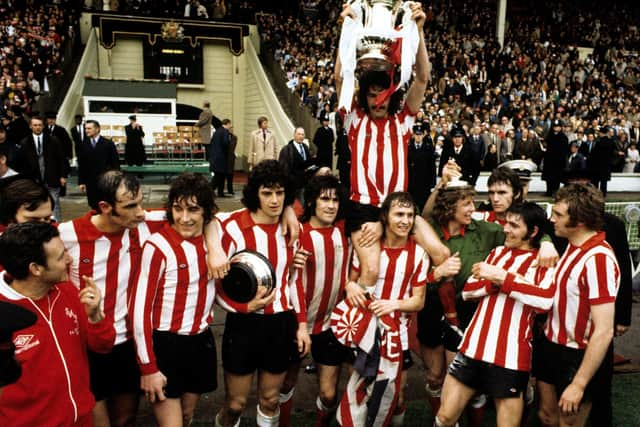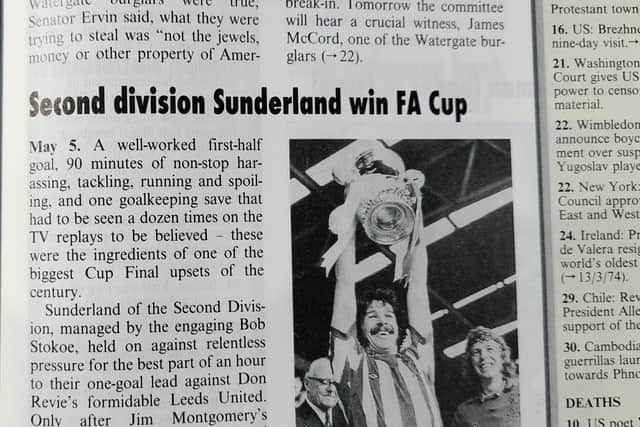Why Sunderland's 1973 triumph stands above all others after 150 years of FA Cup finals
and live on Freeview channel 276
In 2023, the Premier League is purportedly football’s beginning and end.
If deals with God were possible, most fans of struggling top flight clubs would accept mere non-relegation in exchange for early elimination from the cup. No club owner alive would decline such a deal.
Advertisement
Hide AdAdvertisement
Hide AdThe FA Cup remains worth winning. But its lustre has been diminished by the sheer enormity of cash dispensed just for Premier League membership. Consequently, few clubs take the cup seriously now. They virtually all play weakened teams in its early stages.


Hence, pub quiz participants today struggle to remember last year's FA Cup winners. But the 1973 competition is instantly remembered by fans of all clubs.
Below an entry on Watergate no less, Sunderland’s sensational victory that year is entered in the Dorling Kindersley publication, Chronicle of the 20th Century.
It describes: “A well-worked first-half goal, 90 minutes of non-stop harassing, tackling, running and spoiling, and one goalkeeping save that had to be seen a dozen times on the TV replays to be believed; these were the ingredients of one of the biggest Cup Final upsets of the century.”


Advertisement
Hide AdAdvertisement
Hide AdIt’s also difficult to ponder the unlikelihood of the win over Leeds United. Although almost universally disliked, Leeds had one of the finest teams in Europe, whereas Sunderland had required a surge in form under new manager Bob Stokoe to preserve them from relegation to football’s third tier (imagine).
How it compares
Another “shock” you may recall is Wimbledon’s 1988 win over Liverpool. But the Londoners had finished seventh in the old First Division. A 2023 equivalent would be something like Aston Villa beating Manchester City; a surprise, but hardly a shock.
Wigan Athletic sprung a similar surprise in 2013, but were still a Premier League club, albeit a relegated one three days later.


So imagine Manchester City losing the final to Preston in the present day, then you begin to comprehend what Sunderland did. But the comparison still doesn’t do justice to what happened 50 years ago.
Advertisement
Hide AdAdvertisement
Hide AdThere is also a social background to what the victory meant to the then-town of Sunderland. 1973 was a time of considerable industrial unrest, an oil crisis, power cuts, IRA bombs, pay freezes and the unspeakable horror of Tie A Yellow Ribbon Round The Ole Oak Tree spending a month at number one.
The country needed a lift and, with the probable exceptions of two cities (Leeds and another one), it seemed everyone was in thrall to what occurred at Wembley on May 5. Needless to say, after the streets of the then-town had been deserted between 3pm and 5pm, Sunderland went bananas.
Three days later, an estimated 500,000 people lined the streets of Wearside to welcome the team home. Ee-aye-addio.
Perhaps the club will lift the trophy again. One day. They almost did in 1992 when they were runners-up.
Advertisement
Hide AdAdvertisement
Hide AdBut regardless of ifs and whens, a future FA Cup victory for Sunderland, or any club, simply won’t top 1973.
In 1979, on the occasion of SAFC’s centenary, the great football journalist Arthur Appleton wrote: “The 1973 Cup win was a once-in-a-century smile from the gods.”
We have yet to hear it put any better.